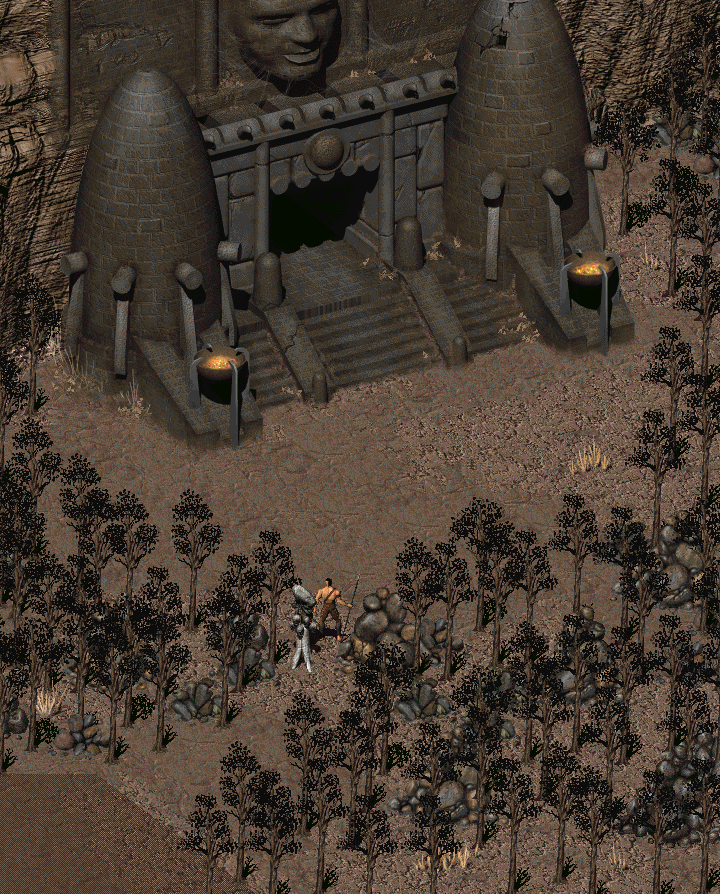-
Welcome to rpgcodex.net, a site dedicated to discussing computer based role-playing games in a free and open fashion. We're less strict than other forums, but please refer to the rules.
"This message is awaiting moderator approval": All new users must pass through our moderation queue before they will be able to post normally. Until your account has "passed" your posts will only be visible to yourself (and moderators) until they are approved. Give us a week to get around to approving / deleting / ignoring your mundane opinion on crap before hassling us about it. Once you have passed the moderation period (think of it as a test), you will be able to post normally, just like all the other retards.
You are using an out of date browser. It may not display this or other websites correctly.
You should upgrade or use an alternative browser.
You should upgrade or use an alternative browser.
Josh Sawyer Q&A Thread
- Thread starter Infinitron
- Start date
As long as you are happy, Josh, I'm fine with everything. 

Now give me Pillars of Eternity 3: Return to Icewind Dale or I'm going to kill your cat and burn your bike. 

Avarize
Magister
Everything makes so much more sense after I saw his tumblr post about how he doesn't read fiction and focuses his leisure time on studying history instead.
Quillon
Arcane
- Joined
- Dec 15, 2016
- Messages
- 5,333
https://jesawyer.tumblr.com/post/625579436746702848/the-job-of-a-studio-design-director
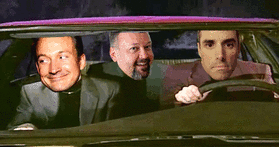
The Job of a Studio Design Director
I am the studio design director at Obsidian Entertainment. This is, for lack of a better term, the “top” design position at the studio. A few people have recently asked me what it means for me to “give feedback” or “advise” on a game that I am not working on. Some people may also wonder what else the job entails. It comes down to five things:
The regular meetings are just that. They are informal, unstructured, and usually 15-60 minutes long, depending on how much there is to talk (or rant) about. If I think it could be helpful, I offer advice, otherwise I listen and give opinions. Sometimes these meetings help me recognize when someone is having a problem that someone else at the company can help with. I then try to put those people in contact with each other to move things forward.
- Meeting regularly with design directors at the company to talk through what they’re working on.
- Playing builds of the company’s games at important milestones and providing feedback.
- When asked, reviewing design documentation or attending design meetings to offer feedback and ideas.
- Maintaining and updating the company’s internal design standards and applicant tests.
- Depending on the position, filtering design resumes and attending interviews with other designers.
I don’t play every team’s games all the time. I play them when they have important milestone builds or when someone on the team specifically wants my feedback on some new feature or piece of content. I play the build, I write up notes, and I give feedback based on those notes. I try to orient my critical feedback around what sort of experience the team has said they are going for and how the experience actually plays out. I also often try to put myself in the position of an ordinary person playing the game for the first time. There are a lot of things a team gets used to and doesn’t realize how aggravating it is to experience fresh. When it comes to either an existing IP or a new IP, I give feedback on how that IP is being used or developed and how I think the audience will receive it.
I can’t review all of the design documentation at the company, but when my feedback is requested or when I think it’s an area where I could be of help, I do review documentation and provide comments and comprehensive feedback. It’s much easier to course correct in the documentation phase than when you’re knee-deep in implementation.
Obsidian has a number of internal documents detailing our expectations of designers at each seniority level and also our expectations of what each sub-discipline should be focused on doing. We also have design tests that go out to applicants. These tests are separated by sub-discipline and (recently) by seniority. Finally, we have company-wide and IP-specific writing standards documents. I did not write all of these documents in the first place, but I am responsible for updating them or asking/allowing someone else to update them based on the needs of projects and the company.
I also don’t sit in on every design interview, but depending on my schedule and the type of position being interviewed, I will either do some of the up-front reviews of applications/tests or I will sit in on interviews and provide my feedback to the people making the hiring decision.
That accounts for about 90% of my day to day responsibilities at the studio design director. The remaining 10% is spent on drop-in design talks and handling all of the quarterly reviews for the company’s many designers.
I hope that explains it somewhat. Thanks for reading.

Last edited by a moderator:
Diggfinger
Arcane
So Josh's work on Pillars of Eternity lore isn't abandoned. And I'm sure none of that lore will make it into Avowed, that game he's totally not working on.
Weeeell he's working on the Pillars table-top RPG, so surely it's used for that?
Not saying it couldnt bridge over to Avowed, of course.
Diggfinger
Arcane
https://jesawyer.tumblr.com/post/625579436746702848/the-job-of-a-studio-design-director
The Job of a Studio Design Director
I am the studio design director at Obsidian Entertainment. This is, for lack of a better term, the “top” design position at the studio. A few people have recently asked me what it means for me to “give feedback” or “advise” on a game that I am not working on. Some people may also wonder what else the job entails. It comes down to five things:
The regular meetings are just that. They are informal, unstructured, and usually 15-60 minutes long, depending on how much there is to talk (or rant) about. If I think it could be helpful, I offer advice, otherwise I listen and give opinions. Sometimes these meetings help me recognize when someone is having a problem that someone else at the company can help with. I then try to put those people in contact with each other to move things forward.
- Meeting regularly with design directors at the company to talk through what they’re working on.
- Playing builds of the company’s games at important milestones and providing feedback.
- When asked, reviewing design documentation or attending design meetings to offer feedback and ideas.
- Maintaining and updating the company’s internal design standards and applicant tests.
- Depending on the position, filtering design resumes and attending interviews with other designers.
.

eeeeeazy peeezy, so basically all a studio-director does is boss random ppl around, sit in on design meetings to toss out spur of the moment ideas and tell dudes every 3 months how much they suck.
I can do that too! Sign me up, Feargus! Diggsta is joining Obsidian...
- Joined
- Jan 28, 2011
- Messages
- 100,132















Quillon
Arcane
- Joined
- Dec 15, 2016
- Messages
- 5,333
Looking back at Deadfire's endings now, they are not so different in terms of continuity; for whatever reason I thought there were world altering endingS and that they'd have very hard time making a sequel with those ending choices but I realize now there is only one world altering ending and that's destroying the wheel(alternatively "ending the world" doesn't warrant a sequel so). So yeah a game set after Deadfire would not be so hard to make without a canon ending, long as it isn't set too far into the future.
rusty_shackleford
Arcane
- Joined
- Jan 14, 2018
- Messages
- 50,754

what about the ending where you just refuse to work with berath?Looking back at Deadfire's endings now, they are not so different in terms of continuity; for whatever reason I thought there were world altering endingS and that they'd have very hard time making a sequel with those ending choices but I realize now there is only one world altering ending and that's destroying the wheel(alternatively "ending the world" doesn't warrant a sequel so). So yeah a game set after Deadfire would not be so hard to make without a canon ending, long as it isn't set too far into the future.
Quillon
Arcane
- Joined
- Dec 15, 2016
- Messages
- 5,333
what about the ending where you just refuse to work with berath?
eothas destroys the wheel without spectators
- Joined
- Mar 6, 2016
- Messages
- 4,847



Okay, why is this post getting so many negative ratings? Have you idiots actually played MotB? That game as well as DS3 have far more artistic merit than the PoE games, which could not look more generic.Pillars looks bland. Mask of the Betrayer and Dungeon Siege 3 are the best-looking Obsidian games.
- Joined
- Oct 1, 2018
- Messages
- 8,823
Okay, why is this post getting so many negative ratings? Have you idiots actually played MotB? That game as well as DS3 have far more artistic merit than the PoE games, which could not look more generic.Pillars looks bland. Mask of the Betrayer and Dungeon Siege 3 are the best-looking Obsidian games.


- Joined
- May 29, 2010
- Messages
- 36,930
Okay, why is this post getting so many negative ratings? Have you idiots actually played MotB? That game as well as DS3 have far more artistic merit than the PoE games, which could not look more generic.
Justin Cherry is an all right art director, but his style is very cartoony and gaudy which most people here hate.
Ninjerk
Arcane
- Joined
- Jul 10, 2013
- Messages
- 14,323
While I cba to look at the Pillars credits to see if he worked on it, I believe Roguey is referring to his work on MotB (and maybe previous Obsidian titles). Here G Ziets credits him with some noteworthy contributions to MotB in a thread about their departure from Obsidian (pre-Project Eternity): https://rpgcodex.net/forums/threads/george-ziets-and-justin-cherry-left-obsidian.71134/#post-2047296whats cartoony about pillars?
For anyone who doesn’t know Justin, you may recognize his art style here: http://www.iiiil0liiii.com/gallery
Justin was responsible for a lot of the coolest art on MotB: the great visual effects, Okku the bear, the design for the actual mask, the Faceless Man, etc. He was also responsible for the artistic vision on Dungeon Siege 3 (which was probably, in my opinion, the most solid element of that game).
rusty_shackleford
Arcane
- Joined
- Jan 14, 2018
- Messages
- 50,754

One of the good parts of poe1 & 2 was the art. Easily two of the best looking iso games.
Just a shame the mechanics were awful.
- Joined
- Jan 28, 2011
- Messages
- 100,132















PoE base game already looks very good on its own, but The White March is where it gets incredibly beautiful:Pillars looks bland. Mask of the Betrayer and Dungeon Siege 3 are the best-looking Obsidian games.
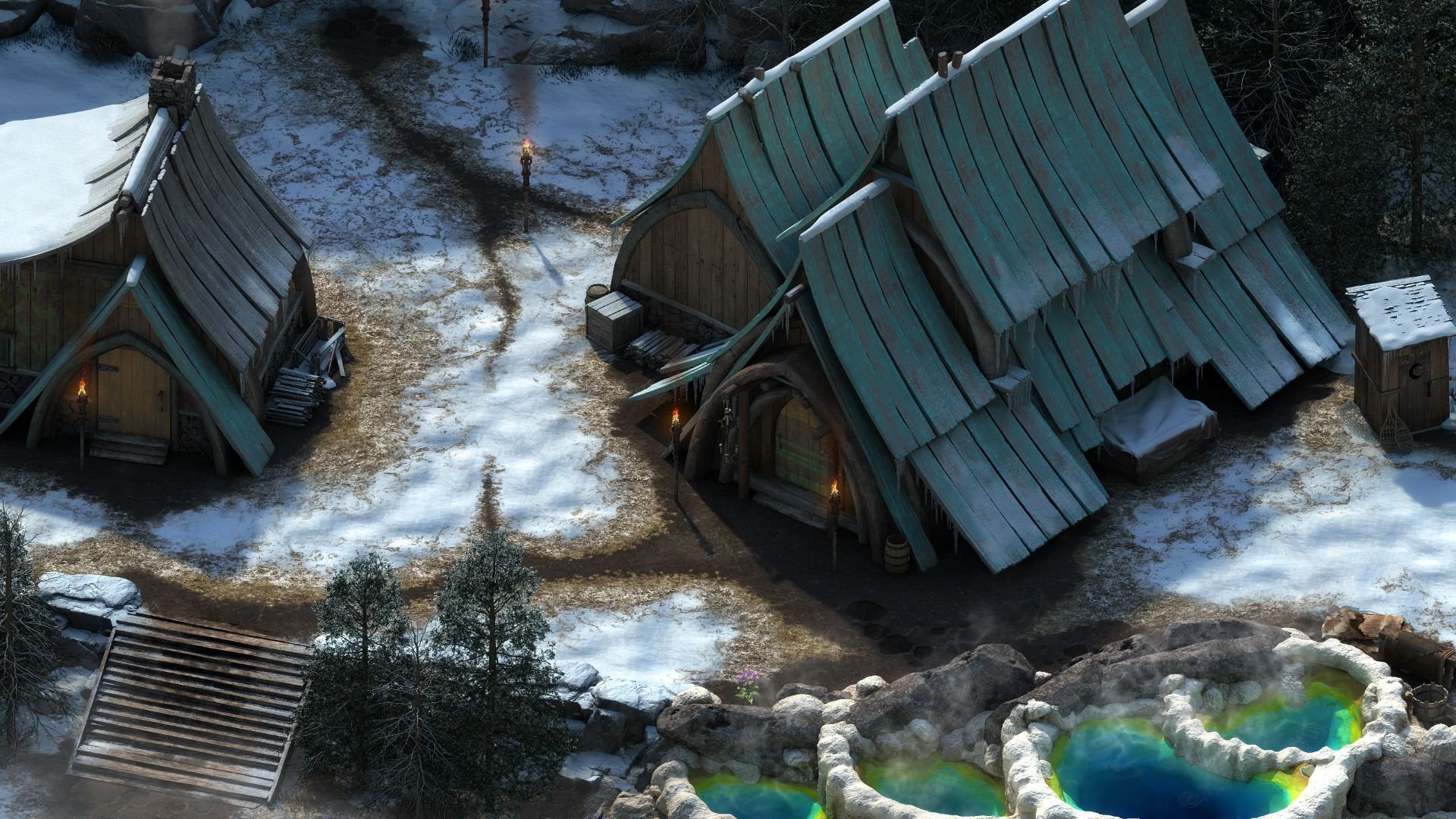
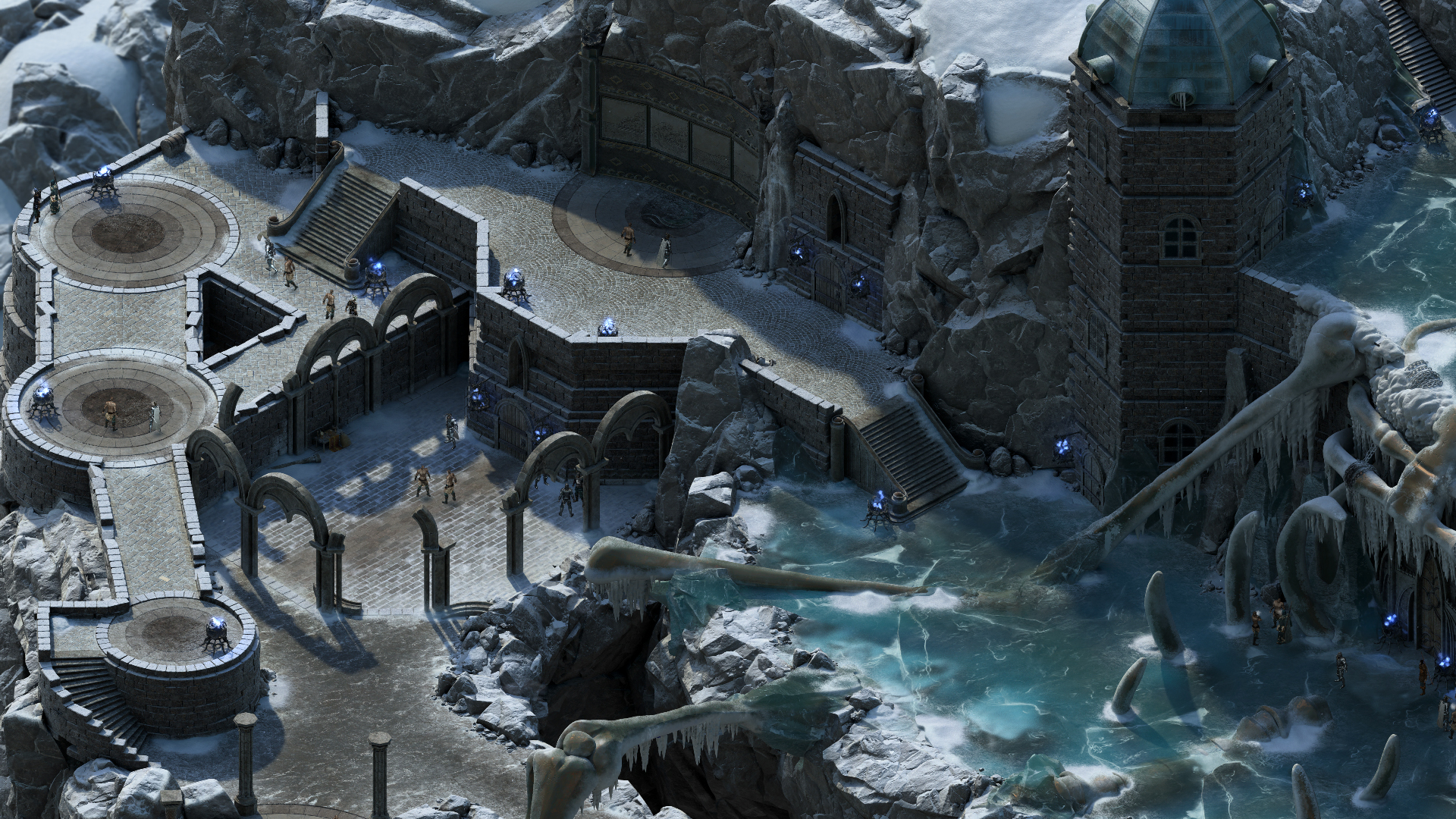

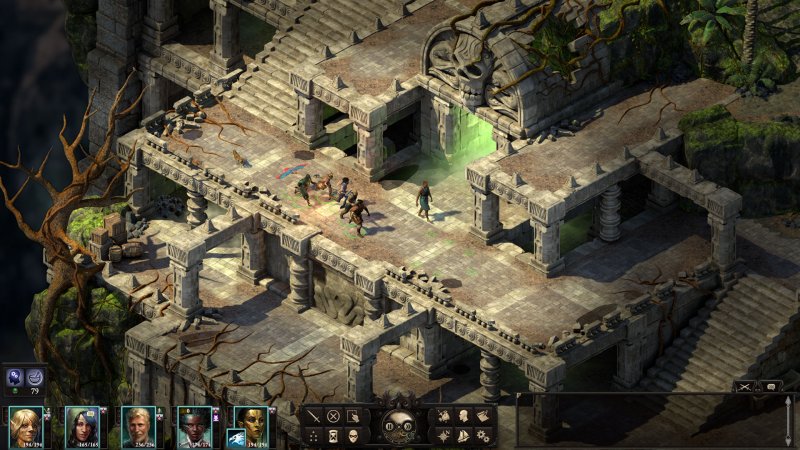

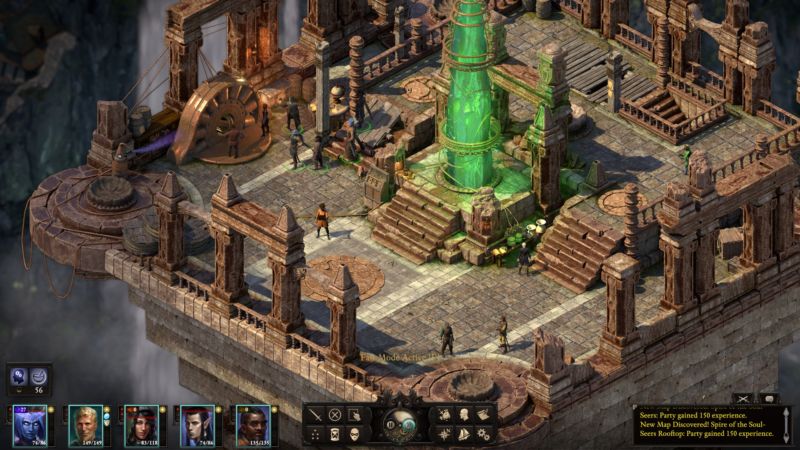



- Joined
- Jan 28, 2011
- Messages
- 100,132























